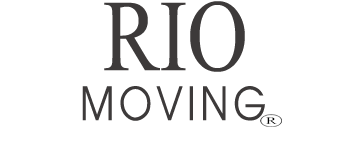18 Jun Evolution in Motion: Changes in the Moving Industry in the USA
Moving, whether across town or across the country, has always been a significant event in people’s lives. The moving industry in the USA, like many others, has undergone substantial changes over the years, driven by technological advancements, demographic shifts, and evolving consumer preferences. In this blog post, we’ll explore some of the key transformations shaping the moving industry landscape today.
Technology Driving Efficiency
One of the most noticeable changes in the moving industry is the integration of technology to streamline operations and enhance customer experience. Traditionally, moving companies relied on phone calls and in-person estimates. Today, customers can obtain quotes online through websites and mobile apps, often with the help of virtual surveys and AI-powered algorithms that calculate costs based on inventory lists or virtual walkthroughs of homes.
Moreover, technology has enabled real-time tracking of shipments, providing customers with peace of mind and transparency throughout the moving process. GPS tracking of moving trucks and mobile apps that allow customers to communicate directly with movers are now standard features offered by many moving companies.
Rising Consumer Expectations
With the proliferation of online reviews and social media platforms, customer expectations have risen significantly. Today’s consumers expect reliable service, clear communication, and flexibility from moving companies. Companies that fail to meet these expectations risk losing business to competitors who prioritize customer satisfaction.
Additionally, there has been a noticeable shift towards eco-friendly practices within the industry. Many customers now prefer moving companies that use fuel-efficient trucks, recyclable packing materials, and offer options for donating or recycling unwanted items.
Demographic Shifts and Urbanization
Changes in demographics and patterns of urbanization have also influenced the moving industry. Millennials, now the largest segment of the workforce, tend to prioritize convenience and are more likely to relocate for career opportunities. This demographic trend has led to an increased demand for moving services tailored to young professionals, including short-term storage solutions and flexible scheduling options.
Furthermore, the trend towards urbanization has created opportunities for specialized moving services catering to residents of high-rise buildings and densely populated urban areas. These services often require specialized equipment and expertise to navigate tight spaces and comply with building regulations.
Impact of COVID-19
The COVID-19 pandemic brought about unique challenges and opportunities for the moving industry. On one hand, lockdowns and travel restrictions initially reduced demand for moving services. On the other hand, the shift towards remote work and the desire for more space prompted many individuals and families to reconsider their living arrangements, leading to a surge in residential relocations.
Virtual surveys and contactless moving options gained popularity during the pandemic, allowing customers to safely move while minimizing physical contact with movers. Moving companies also implemented stringent health and safety protocols to protect both their employees and customers.
Regulatory Changes and Industry Consolidation
The moving industry in the USA is subject to various regulations at the federal and state levels. In recent years, there has been a push for stricter enforcement of consumer protection laws and regulations governing interstate moving. These changes aim to safeguard consumers from fraudulent practices and ensure fair pricing and transparency within the industry.
Moreover, the industry has seen increased consolidation, with larger moving companies acquiring smaller firms to expand their market share and service offerings. This consolidation trend has contributed to a more competitive landscape, offering consumers a wider range of choices but also raising concerns about monopolistic practices.
Looking Ahead
As we look to the future, several trends are likely to shape the moving industry further. Advances in artificial intelligence and automation may lead to further efficiencies in logistics and customer service. The growing focus on sustainability may prompt more moving companies to adopt eco-friendly practices and offer carbon-neutral moving options.
Additionally, as remote work becomes more prevalent, the geographical flexibility of the workforce may continue to drive demand for residential relocations. Moving companies that can adapt to these evolving trends and prioritize innovation and customer satisfaction are likely to thrive in this dynamic industry.
In conclusion, the moving industry in the USA is undergoing rapid transformation driven by technological advancements, changing consumer expectations, demographic shifts, and regulatory changes. By embracing these changes and adapting to emerging trends, moving companies can position themselves for success in an increasingly competitive marketplace.

No Comments